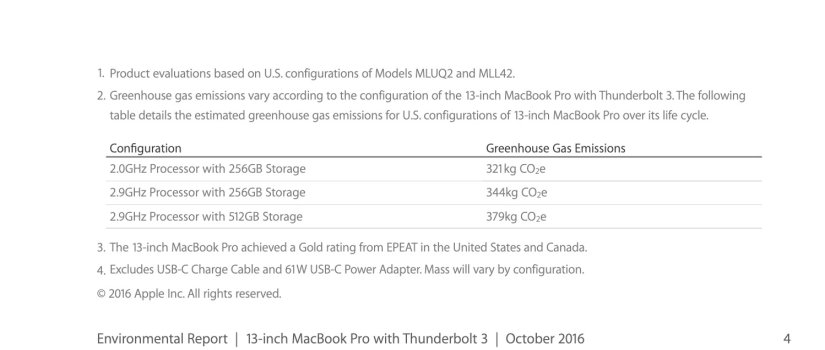To be honest, .28W is little more than a rounding error, and would have little to no impact on overall usability, battery life, etc. of the machines in question. In fact, it would be safe to say that the M1 Air consumes less power overall than the 2016 Intel-based MBP AND has a significantly lower carbon footprint:
2016 MBP:
![2016 MBP Carbon Footprint.jpg 2016 MBP Carbon Footprint.jpg]() 2020 MBA:
2020 MBA:
![2021 MBA Carbon Footprint.jpg 2021 MBA Carbon Footprint.jpg]()
These were taken from the same environmental reports you used, and present a more complete picture than focusing in on just one line from each report.
As far as "How could this be?". there's a lot of possible reasons, including how M1 handles graphics compared to the Intel CPUs used in that 2016 model, the specific display being used with each model, backlight differences, even the OS being used could impact that power consumption.
The other consideration is that even over the course of a full year (assuming 10 hours of use a day, five days a week for 52 weeks), that only adds up to .728 kWh in additional energy consumption. If you were running the machine 24/7/365, it still only adds up to 2.4528 kWh over the course of a year.
![Screen Shot 2024-03-08 at 2.00.25 PM.png Screen Shot 2024-03-08 at 2.00.25 PM.png]()
![Screen Shot 2024-03-08 at 2.00.40 PM.png Screen Shot 2024-03-08 at 2.00.40 PM.png]()



